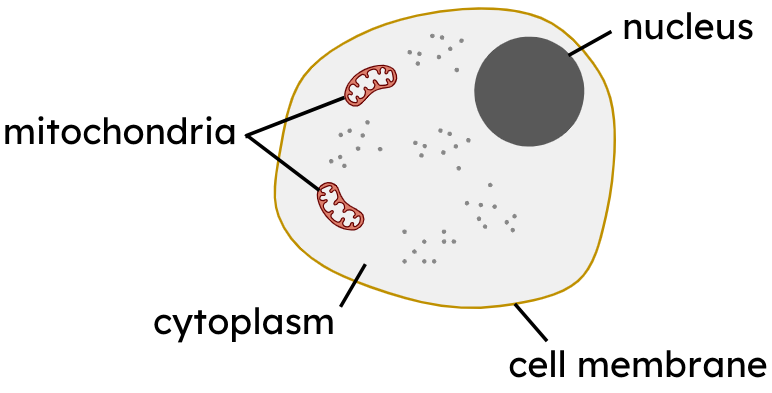Myths about teaching can hold you back
- Year 7
Plant cell structures and their functions
I can identify common structures of plant cells and describe what these structures do.
- Year 7
Plant cell structures and their functions
I can identify common structures of plant cells and describe what these structures do.
These resources will be removed by end of Summer Term 2025.
Switch to our new teaching resources now - designed by teachers and leading subject experts, and tested in classrooms.
These resources were created for remote use during the pandemic and are not designed for classroom teaching.
Lesson details
Key learning points
- Plant cells have some common structures.
- Some of these structures are common with animal cells, such as the cytoplasm, cell membrane, nucleus and mitochondria.
- Plant cells have additional structures including the cell wall and vacuole, and some have chloroplasts.
- Each structure in a plant cell has a specific function.
- Plant cells can be adapted with different shapes and structures.
Keywords
Cell wall - The cell wall of a plant cell is made of fibres that strengthen the cell but allow substances to pass through.
Chloroplast - Chloroplasts are structures found within cells in the green parts of a plant. They trap light to enable the plant to make its own food.
Vacuole - The vacuole of a plant cell contains watery sap which, when full, keeps the cell firm.
Common misconception
Plants are not living; plant cells all have the same shape and structures (as depicted in textbooks)
This lesson consolidates understanding that plant cells are living, and that different plant cells can have different shapes and structures.
To help you plan your year 7 science lesson on: Plant cell structures and their functions, download all teaching resources for free and adapt to suit your pupils' needs...
To help you plan your year 7 science lesson on: Plant cell structures and their functions, download all teaching resources for free and adapt to suit your pupils' needs.
The starter quiz will activate and check your pupils' prior knowledge, with versions available both with and without answers in PDF format.
We use learning cycles to break down learning into key concepts or ideas linked to the learning outcome. Each learning cycle features explanations with checks for understanding and practice tasks with feedback. All of this is found in our slide decks, ready for you to download and edit. The practice tasks are also available as printable worksheets and some lessons have additional materials with extra material you might need for teaching the lesson.
The assessment exit quiz will test your pupils' understanding of the key learning points.
Our video is a tool for planning, showing how other teachers might teach the lesson, offering helpful tips, modelled explanations and inspiration for your own delivery in the classroom. Plus, you can set it as homework or revision for pupils and keep their learning on track by sharing an online pupil version of this lesson.
Explore more key stage 3 science lessons from the Cells unit, dive into the full secondary science curriculum, or learn more about lesson planning.

Licence
Prior knowledge starter quiz
6 Questions
Q1.All living organisms are made up of the building blocks of life. These are called...
Q2.Choose the structure that controls which substances can enter and leave a cell.

Q3.The contains the DNA in an animal cell and controls the cell's activities.
Q4.In which part of an animal cell does respiration take place?

Q5.Plants are living organisms. Which common life processes do plants carry out at some stage in their life cycle?
Q6.Match the letter label on the animal cell diagram to the name of the structure.

cell membrane
mitochondria
cytoplasm
nucleus
Assessment exit quiz
6 Questions
Q1.All plants are made up of living building blocks called...
Q2.Choose the structures that animal and plant cells both contain.
Q3.Match the plant cell structure with a description of its function.

Where light is absorbed to help the plant make its food.
Contains a watery sap and helps to keep the cell firm.
Made of fibres to strengthen the cell.


